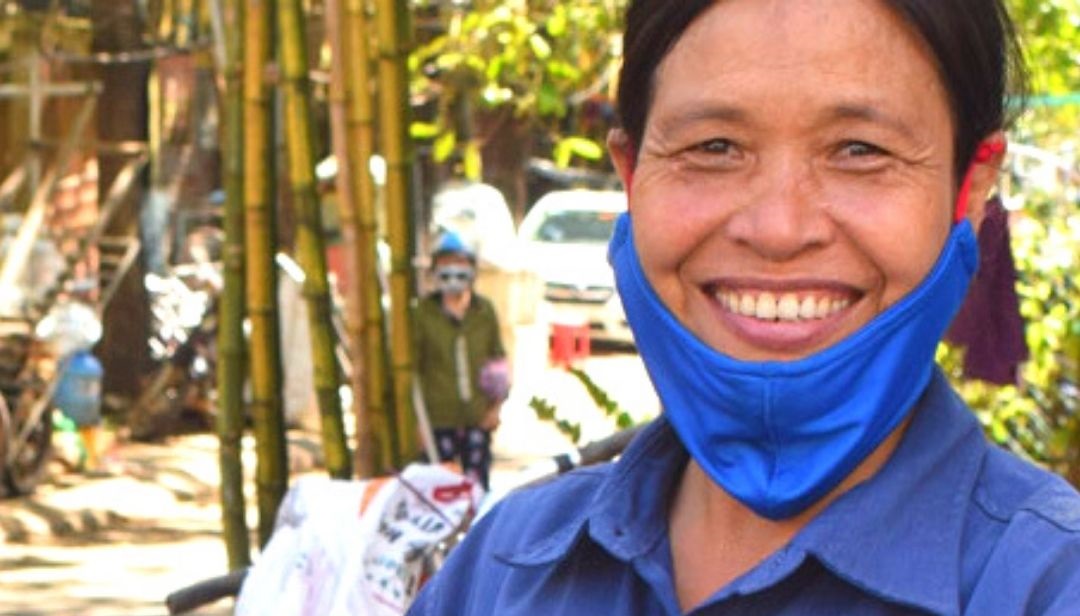Hop Farm’s circular economy model in agriculture
Located in De Cau village, Thanh Son commune, Luong Son district, Hoa Binh province, Hop Farm’s circular economy model based on growing pomelo is the core that has not only brought environmental values and create economic value for themselves.

Hop Farm model
According to the Ellen MacArthur Foundation, the circular economy is understood to include two cycles:
+ A biological cycle: excess substances will return to nature after use and can be reused as nutrients in the new cycle.
+ A technical cycle: products, components or materials are designed and circulated on the market with the aim of minimizing loss/waste. Engineering materials can be recovered by engineering cycles through different iterations: maintenance and repair, reuse and redistribution, refurbishment and re-fabrication, and ultimately recycling.
Purpose: Maximize the use of virgin, non-toxic products and materials and products designed to be easy to maintain, reuse or refurbish over their useful life, and then easily disassembled and recycled to use for new products with minimal loss and waste in the entire exploitation-production-use cycle.
Correspondingly, the model of Hop Farm includes the following:
+ The biological cycle of enterprises being implemented: 1- (Growing grass, collecting grass on the hill by – raising cows – collecting manure, composting – fertilizing grapefruit, fertilizing grass); 2 – Grass, weeds on pomelo hill – cut the surface cover, decompose naturally – an additional source of fertilizer for grass, wild plants, pomelo trees).
+ Technology cycle the enterprise is implementing: 1- (Grapefruit peel – distillation of grapefruit essential oil – pomelo peel residue – fermentation to produce organic detergents – residue – fertilizer for pomelo trees).

Hop Farm model
With such a model, Hop Farm aims to address the following sustainable development goals:
– Short-term goals: 1, 2, 3, 4, 5, 6.
– Long-term goals: 2, 5, 6, 7, 9, 11, 12, 13, 14, 15, 16, 17.

During the 5 years since its establishment, the business has achieved very positive numbers such as the farm area reaching 8 hectares, planting over 2500 pomelo trees, the number of reproductive cows reached 10 cows and the number of commercial pigs reached 30 heads.
By 2022, Hop Farm said it has covered the planned area and is expected to harvest the second crop of pomelo trees this year. It is expected that in the next 3 – 6 months, the business will achieve the goals in terms of implementation progress such as renovating the livestock barn (Expanding storage, roof, renovating pig house according to water-saving floor barn technology), improve biological cushions, replace the current padding (rice husk and sawdust) with grass and wild plants on pomelo hill and classify and manage plastic waste, solid waste, organic waste in the area. The enterprise’s expected inputs include an additional investment of 50-60 million VND, hiring more human resources from outside, obtaining 1-1.5 tons of grass and weeds on chopped, dried and 110 liters of probiotics. Hop farm aims to set expectations for output efficiency including completing the cycle of planting grass / raising cows / collecting fertilizers / fertilizing pomelo trees, grass, perfecting the cycle of raising pigs / taking manure / fertilizing pomelo trees, grass and towards the goal of a zero-waste farm.

Hop Farm model
In addition, Hop Farm also determines the long-term expectation of the business (1 – 5 years). For example, in terms of implementation progress, the enterprise wishes to expand pig farming with a scale of 150-200 pigs per year, increase the production of breeding cows to 15-20 mother cows, achieve the total amount of organic fertilizer (cow dung + pig manure) self-produced: 100-150 tons/year. Enterprises expect that the input will add 5-10 breeding cows (estimated 100-200 million), breeding pigs 150-200 heads/year (estimated 150-200 million/year), adding 01 regular laborer (up to 03 employees). Expectations for output efficiency in the next 1-5 years include achieving pomelo production: 15-20 thousand fruits (150-200 tons), commercial calves reaching 15-20 heads/year, commercial pigs reaching 150- 200 heads/year, organic farm, circulating and saving production costs/economic efficiency, brand and product known to the community.












